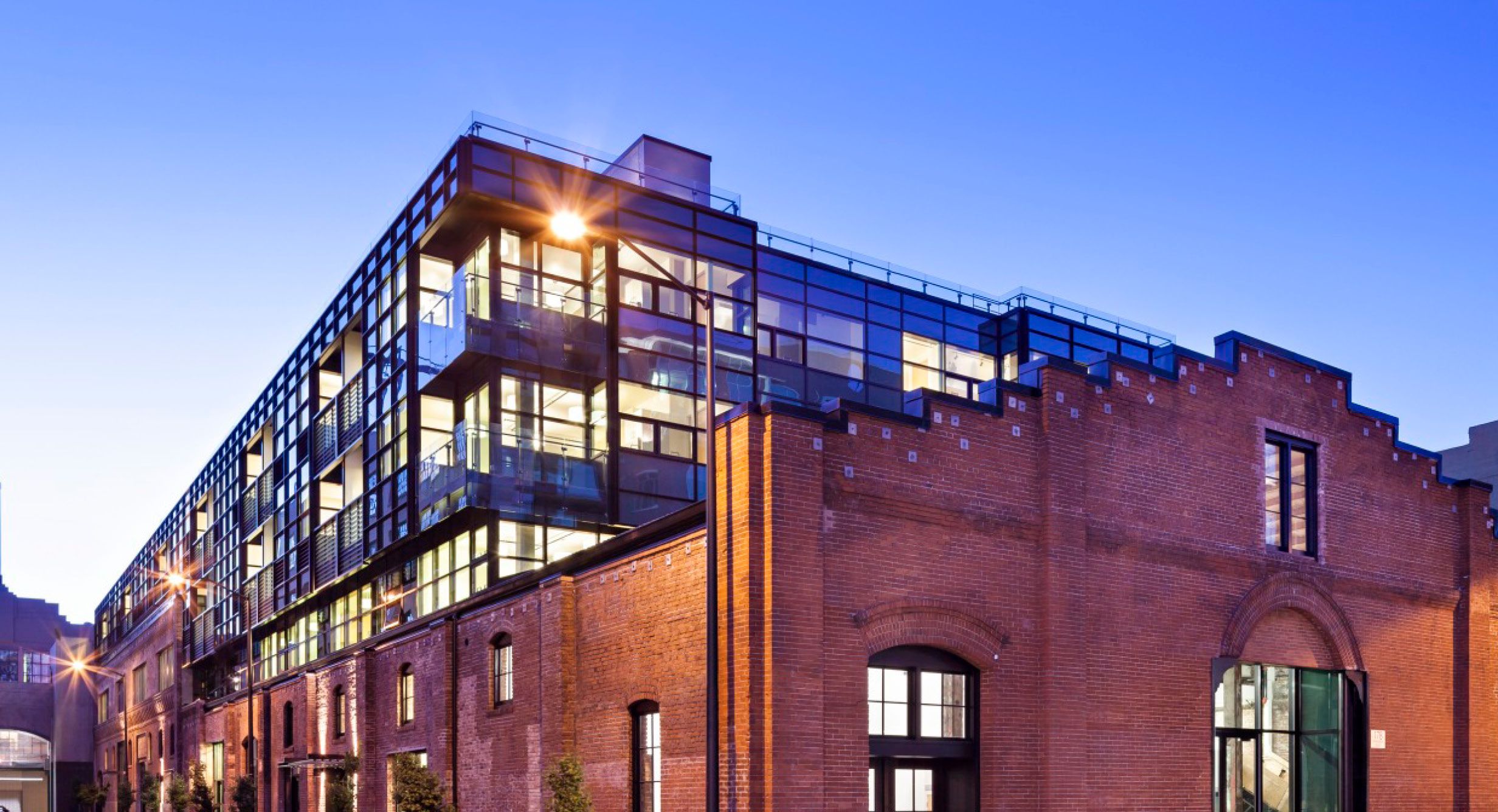
How Design Will Shift to Accommodate Post-COVID-19 Multifamily Living
- Alexander Briseno
- Greg Verabian
- Kate Campbell
Few residential developers could have predicted a devastating pandemic when they planned the homes in which we’re now sequestered. Shelter-in-place orders across the U.S. to contain COVID-19 have forced many of us to negotiate dining tables, kitchen counters, sofas and even garages with our spouses, roommates, children and pets. Suddenly, our living rooms may feel unbearably small, or too dark, with no escape to focus or relax. Some of us may regret not getting a place with a porch or a balcony.
While single-family homeowners have more leeway to adapt their homes to new needs, many apartment tenants feel boxed in by intractable surroundings.
Now is the time for developers to adjust multifamily buildings for a post-COVID-19 world. As telecommuting gains more acceptance, questions loom: Will the home office become as important as the bedroom or the kitchen? How will residents separate their work and personal lives? How can homes prevent the spread of disease?
Will the home office become as important as the bedroom or the kitchen? How will residents separate their work and personal lives? How can homes prevent the spread of disease?
HKS designers have been exploring answers to these questions. While some state-of-the-art solutions have emerged, such as elaborate modular wall systems and even beds that glide up into the ceiling, we are pursuing a more pragmatic approach. Renters will predictably demand more flexibility of their apartments in new developments, but affordability will remain a top concern for them. Developers also must account for their own budgets and operational constraints.
In the concepts below, we illustrate what we believe a “new normal” for apartment living could look like. To help show what’s possible and practical, we’ve taken unit layouts from multifamily projects that we previously proposed in major cities and reimagined them for a post-pandemic future. Regardless of whether it’s a market-rate high-rise or an affordable housing development, designers should incorporate details that make it easier for tenants to live, work and learn together in their homes. These benefits should not be considered a luxury.
Unit Design Basics
Mudrooms/foyers: Residents of suburban homes can remove coats in their foyers or kick off dirty shoes in laundry rooms connected to their garages. COVID-19 might spur the resurgence of mudroom equivalents in apartments. Entryways can be lined with resilient materials that are easy to clean, such as porcelain tile or polished concrete. By placing a bathroom and storage closet or laundry closet next to the entryway, designers can create a simple decontamination zone for people to remove shoes, disrobe and clean themselves. Some layouts might allow the placement of a sliding door between the entryway and the remainder of the apartment to keep outside particles from drifting into the unit. These spaces can also be outfitted with a bike rack or additional storage furniture.
Flexible workspaces and adjustable surfaces: Remote work and learning have underscored the importance of access to separate, and sometimes private, workspace. But because apartments only have so much room, those workspaces or home office nooks need to adapt to a variety of needs depending on the user or the time of day. Users’ ages and demands can be so diverse that flexibility must be designed into these spaces. For example, when developers provide built-in furniture in a residential unit, designers should incorporate the height-adjustable surfaces that are prevalent in American offices. A worksurface might be shared by a toddler scrawling in a coloring book, a teenager hunching over piles of homework or an adult taking video conference calls. The worksurface should also provide storage space underneath.
Preferential treatment of home office for access to light and air: The location of the home office space deserves special consideration. Typical apartment design treats living and sleeping spaces preferentially. But if some residents spend most of their day in the workspace, should that be the prime area in the unit? Building codes across the U.S. require that habitable spaces such as bedrooms and living rooms have access to natural light and air via operable windows. Home offices are usually not required to have window access like bedrooms do. However, some cities allow the bedroom to “borrow” light and air – for instance, from the living room – and receive its required light and air through glass facing the space with the window. This approach also makes it possible to design deeper units, which may be needed when converting an office building with a narrow floor plan for residential use.
Hidden spaces for work/home separation: Telecommuting has made many of us realize that we can’t mentally log off from work after 5 p.m. Residential open floor plans contribute to this issue, as our personal spaces that are now also our professional spaces blend into each other all day. A firm-wide survey of HKS employees working from home since March shows that people who live in all types of housing are, on average, not satisfied with the amount of separation between their workspaces and the rest of their home, though satisfaction levels are particularly low for apartment residents. We’re not just losing track of time; we feel unmoored from a sense of place. That’s why we expect tenants will want to hide some features of their apartments during certain times of the day, so they can mentally anchor themselves to a 9-5 shift or to the feeling of being home after a long day at work. Developers and designers can boost residents’ mental well-being by giving them the option to separate their home and work lives with kitchens, workspaces and media centers that can be concealed by movable panels.
Balcony variety: During the pandemic, apartment dwellers around the world have perched on their balconies to serenade the neighborhood, play bingo with other building residents and take communal exercise classes. We envision a greater demand for balconies and an emphasis on collective balcony design as a social interaction space. Meeting this demand is not just about providing balconies. Their configuration and detailing needs more attention. Many developments treat balconies merely as features to deliver access to the outdoors, but they fail to balance that function with residents’ desire for both privacy and social connection. Fully enclosed balconies offer privacy but block people from opportunities to connect with neighbors. However, designing different balcony configurations in the same building can multiply those opportunities. For example, a development could stagger fully enclosed cantilevered balconies, traditional balconies with rail-height enclosures and fully recessed balconies to create more visual connections among neighbors. Operable screening features would add another layer of flexibility.
Case Studies
One-bedroom apartment
A market-rate high-rise multifamily development in the Hollywood district of Los Angeles currently in schematic design.
Click here for a printable PDF of the one-bedroom case study.

- This home is in a market for creative professionals, where residents intend to work from home 40% of the work week.
- A predictable home office location would be an alcove near the entry, prioritizing the bedroom and the living area for direct access to windows.
- Flipping this workspace to an alcove next to the bedroom gives the home office direct access to the windows while connecting it to both the bedroom and living area.
- Shifting the home office to an alcove in the living area allows for a layout with a mudroom-like space in the kitchen.
- Nesting the home office alcove within the kitchen, while providing features to hide either function, provides the most flexibility.
Studio apartment
An affordable high-rise multifamily development in downtown Atlanta currently in concept design.
Click here for a printable PDF of the studio case study.

- Rental price point is the No. 1 factor in affordable housing design. How can the home do more with the same square footage?
- A simple strategy is to provide a built-in workspace as an extension of the kitchen.
- If the workspace is considered a priority, it can be placed next to the windows for optimum light and air.
- The bed can be hidden during business hours or for social occasions.
- Integrating living and work areas using fold-away cabinetry allows for a mudroom at the entry.
- Incorporating hidden spaces in the home gives the tenant the most flexibility.
Two-bedroom apartment
A market-rate low-rise multifamily development in the Washington, D.C., metropolitan area currently in schematic design.
Click here for a printable PDF of the two-bedroom case study.

- In suburban areas, apartments tend to be larger and prioritize storage space.
- When home offices are included, they are generally tucked in a corner, out of sight.
- Tenants might prefer that the home office is kept away from the mudroom-like space.
- Incorporating workspaces in each bedroom ensures privacy for tenants working or learning from home.
Balconies
An affordable modular multifamily development in downtown Atlanta currently in concept design.
Click here for a printable PDF of the balconies case study.

- A dynamic and diverse balcony configuration combined with modern “dormers” creates a playful effect on the façade.
- But the effect isn’t merely for aesthetics. It allows residents to interact from their private balconies.
- This design creates opportunities for communal activities such as listening to a concert on site.
- It also allows residents to have a community party or to play bingo with their neighbors from the confines of their own homes.
We believe these reasonably low-cost solutions can give multifamily developments a competitive edge to meet workers’ and families’ shifting expectations of what home should look like. It’s not a matter of designing for pandemics but designing for resilience. Resilient design is timeless – necessary in moments of crisis like COVID-19, but just as relevant after the storm passes.
Illustrations and planning assistance by Chris Behling, Tom Danco and John Lucht

